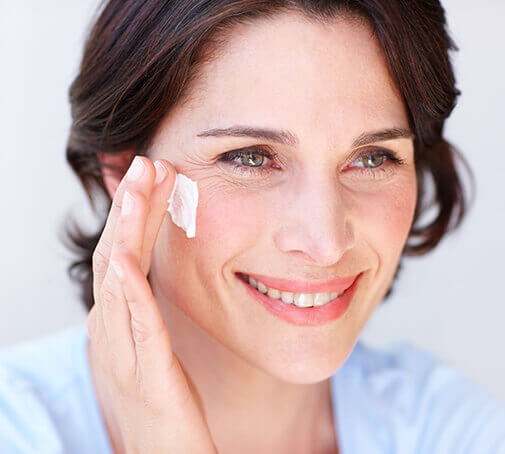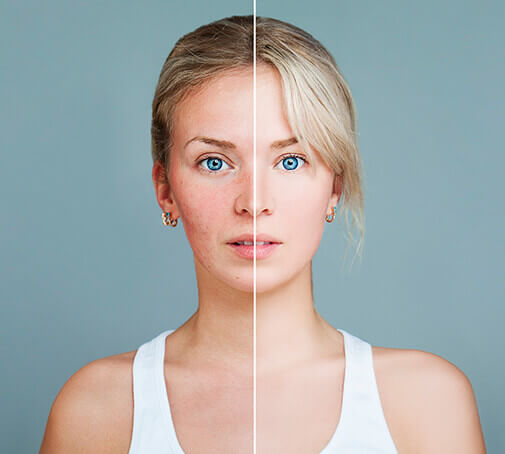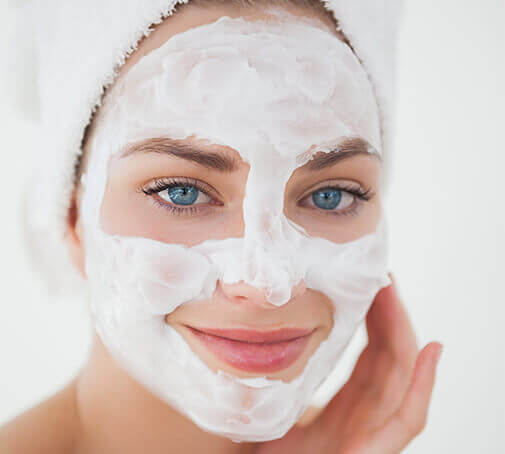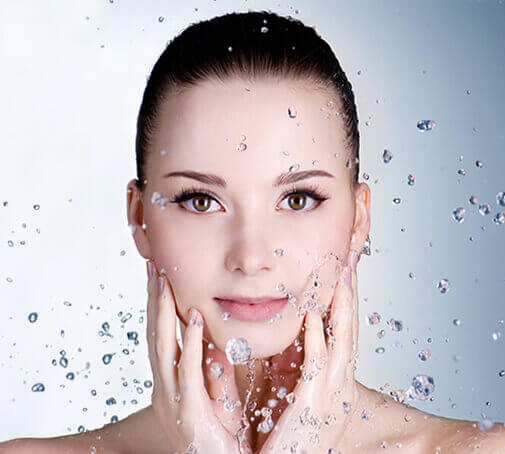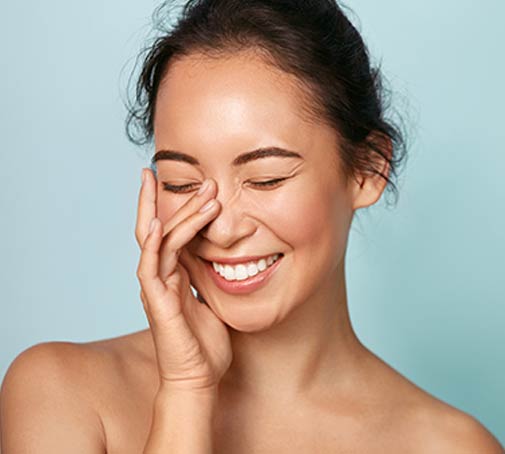

HOW TO DEAL WITH COUPEROSE AND FACIAL REDNESS
Patches of facial redness and broken capillaries on the surface of the skin, especially on the cheeks and nose – the symptoms of couperose can be unsightly and distressing to those suffering from it. Only products that are properly adjusted to this skin type can take on this cosmetic challenge.
Couperose skin is often caused by hereditary factors like a weak connective tissue and weak capillary walls. It mainly affects women aged 30 and over, who will begin to notice small blood vessels shimmering red or blue through the skin’s surface – the epidermis. With age, the skin gets thinner and broken capillaries become even more visible – a process that often leads to permanent redness around the nose, cheeks, neck and décolleté.
In rare cases, couperose skin can turn into rosacea, a condition that causes chronic inflammation and severe redness on the face, including the forehead and chin. Rosacea is commonly associated with the emergence of papules and pastules and sometimes with facial swelling and the formation of excess tissue like an enlarged nose, the so-called ‘rhinophyma’. If your skin shows symptoms of rosacea, it is recommended to consult a dermatologist, as treatment options for rosacea include laser treatments and Intense Pulsed Light therapy.
In general, it is advisable to focus on prevention as early as possible if you begin to show signs of couperose or rosacea-prone skin. Even though the genetic disposition to a weak connective tissue and weak capillaries will always stay, it is possible to reduce redness and visible veins on the face with the help of the right products and a good skincare routine.
COUPEROSE Causes, Symptoms & Common Questions


COUPEROSE CAUSES AND CONTRIBUTING FACTORS:
- Genetic disposition to a weak connective tissue and weak capillaries
- Mainly affects women aged 30 and over
- Extreme fluctuations of temperature (sauna, etc.)and hot water
- Smoking and excessive consumption of alcohol and caffeine
- Sun exposure
- Spicy foods
SYMPTOMS OF COUPEROSE:
- Capillaries can be seen shimmering through the epidermis on the cheeks and nose
- Patches of redness around the nose, cheeks, neck and décolleté
- Uneven and blotchy skin tone
- Sensitive, irritated and irritation-prone skin
- Dry skin & feeling of tightness
COUPEROSE CAUSES AND CONTRIBUTING FACTORS:
- Genetic disposition to a weak connective tissue and weak capillaries
- Mainly affects women aged 30 and over
- Extreme fluctuations of temperature (sauna, etc.)and hot water
- Smoking and excessive consumption of alcohol and caffeine
- Sun exposure
- Spicy foods
SYMPTOMS OF COUPEROSE:
- Capillaries can be seen shimmering through the epidermis on the cheeks and nose
- Patches of redness around the nose, cheeks, neck and décolleté
- Uneven and blotchy skin tone
- Sensitive, irritated and irritation-prone skin
- Dry skin & feeling of tightness
What is couperose?
Facial flushing, redness, broken capillaries and skin feeling hot, tender and irritated – these are all typical symptoms of couperose skin. The condition is characterized by broken blood vessels or spider veins that become visible as thin red veins shimmering through the skin, especially around the cheeks and nose. It mainly affects adults with fair and sensitive skin, aged 30 or over. In some cases, couperose can turn into chronic rosacea. Once you are at this critical stage, it is recommended to consult a dermatologist to determine the appropriate therapy. The most common cause of couperose is a genetic predisposition and a weak connective tissue. The development of this skin condition is a slow process that is not only linked to genetics, but also to personal lifestyle. That is why it is all the more important to take preventive measures with skincare products that address the unique needs of skin prone to couperose and rosacea.
What make-up is good for redness-prone couperose skin?
You can use a color-correcting, green-tinted camouflage cream to neutralize red patches of skin and visible broken capillaries. Green is the complementary color to red, which makes it remarkably effective at hiding skin redness. Oil-free foundations with high coverage and a matte finish are especially suitable for skin prone to couperose. Using a powder with high coverage in the T-zone prevents the skin from becoming too shiny during the day. Blush creates a fresh and rosy complexion, just go with a color that is not too red or pink. But even a well-done make-up with good coverage can only temporarily hide your couperose. A professional anti-redness skincare routine is the only long-lasting solution to combat this skin condition.
What causes broken capillaries?
Despite what the name suggests, broken capillaries are not actually broken, but rather dilated or enlarged. They are also called spider veins, or telangiectasia in medical terms. When the connective tissue loses elasticity, the capillary walls lose their support and small red blood vessels become visible on the surface of the skin. The loss of elasticity can leave these thin capillaries permanently dilated. However, broken capillaries can be treated with skincare products that strengthen the capillaries, support the connective tissue and improve elasticity.
HOW TO TREAT The Best Skincare for Couperose
SOLUTION FOR REDNESS, COUPEROSE AND ROSACEA-PRONE SKIN
Your sensitive skin needs a stabilizing skin care routine that makes use of carefully selected ingredients to support the connective tissue - for a visibly calmer, improved complexion.
The cosmeceutical skincare line REDNESS CONTROL is specifically designed for sensitive skin that is prone to facial redness, broken capillaries and couperose. It is based on a powerful skin-soothing 5-Herbs-Formula, which improves capillary elasticity and supports the connective tissue in the deeper layers of the skin. As a result, visible red blood vessels are reduced by up to 20.7% , redness is reduced by up to 34.8% and the skin is nourished and well-hydrated.
For more details about our REDNESS CONTROL line, key ingredients and relevant test results here: Skincare for couperose skin.

